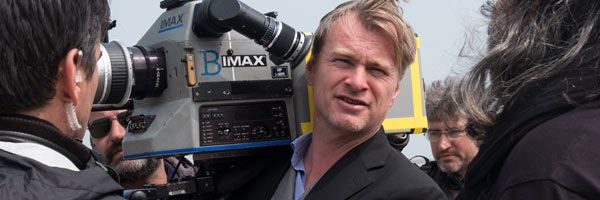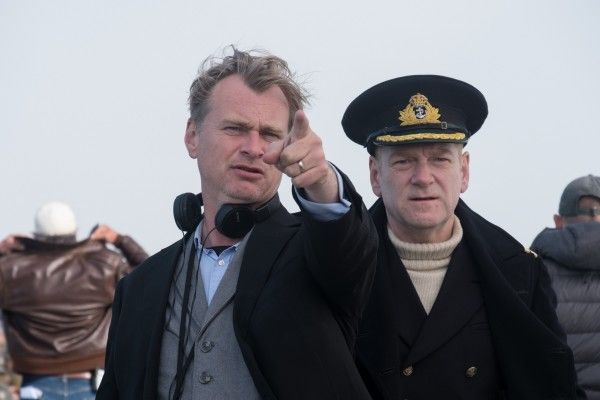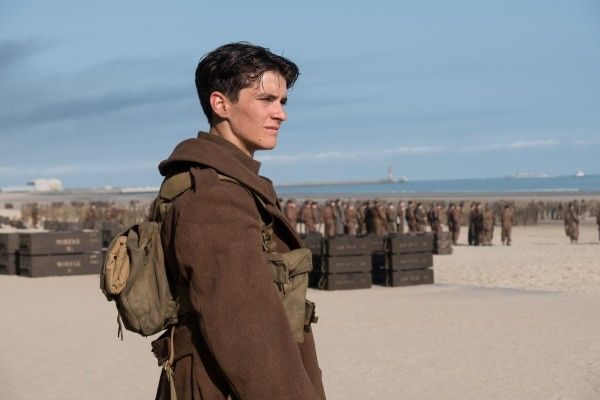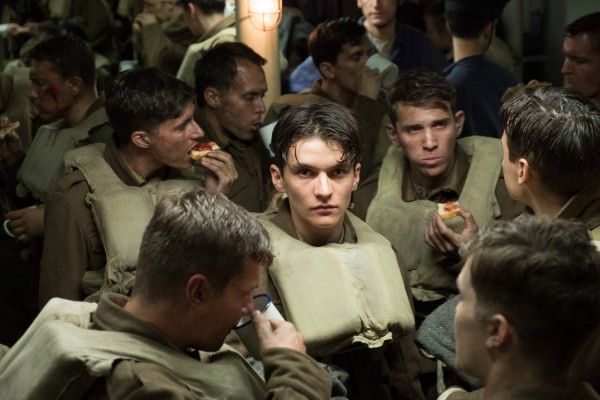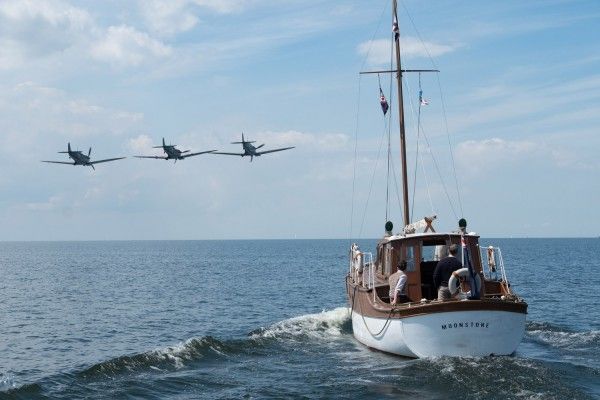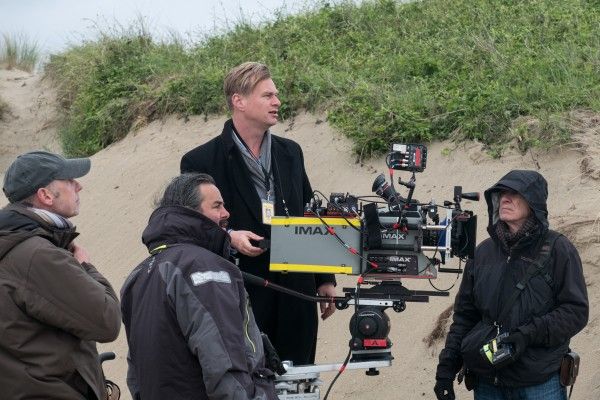The 33rd Santa Barbara International Film Festival celebrated the five Academy Award-nominated directors – Christopher Nolan (Dunkirk), Greta Gerwig (Lady Bird), Guillermo del Toro (The Shape of Water), Jordan Peele (Get Out), and Paul Thomas Anderson (Phantom Thread) – and honored them with the Outstanding Directors of the Year Award for 2018, at the Arlington Theatre on February 6th. From writer/director Nolan, Dunkirk tells the story of Allied soldiers from Belgium, the British Empire and France, as they were surrounded by the German Army and evacuated during a fierce battle in World War II.
During individual panels and a group chat, these directors discussed pushing boundaries in their storytelling and how they are inspired by the work of their colleagues. Nolan talked about how Dunkirk developed, how daunting it was to tell a story based in history, consulting Steven Spielberg before shooting, and his approach to the storytelling. He also talked about getting to know his fellow Oscar nominees and the impression that their films made on him. Here are the highlights of what he had to say during the Q&A.
Question: Did Dunkirk really develop out of a bout with sea sickness, about 25 years ago?
CHRISTOPHER NOLAN: Yeah. Myself and Emma [Thomas], who produced the film and is my wife, took a trip with a friend of ours, 22 or 23 years ago, at about the same time of year that the evacuation had taken place. We thought, “Okay, we’ll get on a speedboat and we’ll recreate the journey and see what that was like,” and it turned out to be extraordinarily challenging. The channel was very rough and it was genuinely a frightening experience, and that was us going on holiday. We weren’t heading into a warzone. So, the respect that we came away from that experience with, for the people who got on those boats knowing they were heading into a warzone, is unimaginable and unthinkable. That was really the genesis of the project. As we got deeper into it, I wanted to find a storytelling approach that would retain some sense of that visceral experience of what it was like to actually be there and try to put the audience there.
You have made so many movies that people love, like Memento, The Dark Knight trilogy, Inception and Interstellar, but this is the first time you’ve done a piece that’s based in history. Was that daunting?
NOLAN: It was very daunting, for a British person to take on this story. It’s a story we grow up knowing. It’s part of the national spirit. We talk about the Dunkirk spirit. It’s sacred ground. To a certain extent, you have to put that out of your mind and just try to do the best job you can, but there’s a moment where I was privileged to be able to sit with some of the veterans who had actually been there. There are very few of them left and they’re in their late ‘90s now, and that came with a very heavy sense of responsibility. One of the stories I was told, by somebody who has since passed on but that I got to sit with, was about seeing someone just walk into the sea, and seeing men just walking into the sea and swimming out. I said to him, “Were they really trying to swim out to the ships or were they killing themselves?” And he said that he didn’t know, but he knew that they were dying. I just knew that we’d have to show that and try to get that across.
You don’t regard Dunkirk as a war film, but one of the first people that you consulted was Steven Spielberg because you so regarded Saving Private Ryan. Why is Dunkirk not a war film, to you?
NOLAN: Anytime you’re working in such a familiar genre, you look to the touchstones of it. You look to the things that really succeeded, in a particular way, for how they’re going to inform what you do. In the case of Saving Private Ryan, Steven loaned me his 35mm print of it, which was absolutely beautiful, and that film has lost none of its visceral power. It’s really extraordinary, but it had the wrong kind of intensity for telling this story. It clarified, in my mind, that I had to view this not so much as a war film, but as a suspense thriller, and have an unseen enemy and a type of tension with the language of suspense, whereby you can’t take your eyes off the screen. What Steven did so brilliantly in Saving Private Ryan was use the language of horror, which is one whereby you’re looking away from the screen. It’s a different thing, but it’s very useful to be able to talk to filmmaker. I mostly spoke to Steven about Jaws and about shooting on the water because I’d never done that, and his advice was, “Don’t.”
Time has been a recurring central theme of your films, particularly Inception, Interstellar and Dunkirk. With Dunkirk, you cut between three storylines that take place in an hour, a day and a week. What was the thought process behind that and how a Shepard tone influenced the writing and the music?
NOLAN: The structure of the script was created to try to give a feeling of relentless tension. It was short because I didn’t want to exhaust the audience. It was only a 76-page script, and I based the structure on a principle from the musical world, called the Shepard tone. It’s essentially an audio illusion, whereby you can make it seem like the tones are continuously rising and never stop. We used that in the music for The Prestige. We used it in the sound effects for the Batpod in The Dark Knight. It never downshifts. The engine is always going up. What I did with Dunkirk was apply the mathematical principle of how that works to the script structure, so that one of the three storylines is always peaking, one after the other. There’s a tumbling forward quality to the narrative, so that it never really lets you relax or rest.
All of your films feature large ensembles of terrific actors, as does Dunkirk. How did you end up casting Harry Styles?
NOLAN: To be honest, he just threw his hat into the ring. We were casting unknowns. We were casting guys of the right age, not 30-year-olds to play 25-year-olds. We wanted 18, 19 and 20-year-olds. We’d managed to fill some of the slots. We’d narrowed it down to a group, but we didn’t have the character of Alex. He sent in an audition on tape, same as everybody else, and I wasn’t really familiar with who he was. I mean, I’d heard of him. He just gave a great read and we decided to throw him into the mix for these mass auditions. Over the course of a week, changing up groups and trying different combinations, he earned his seat at the table. I think what he does in the film is truthful, simple and understated. I was really, really pleased.
You’ve been making the rounds, as a nominated director, this awards season, along with Guillermo del Toro, Paul Thomas Anderson, Greta Gerwig and Jordan Peele. When did you guys first meet?
NOLAN: I’ve known Guillermo for years. Paul, I’ve known for some time. We’ve bonded over the state of the world’s celluloid and trying to maintain infrastructure. He’s been a very important ally in that, so we’ve helped each other out with that, over the years. [Greta and Jordan], I just met at the DGA for that incredible panel. That was a really fun occasion.
Since you’ve probably gotten to see them, by this point, what was your impression of your colleagues’ nominated films?
NOLAN: I had the pleasure, a couple of years ago, of doing a Q&A with Guillermo, so I got to go back and look at all of his films. When I saw The Shape of Water, I knew that this was one of the ones that came straight from the heart and is informed by his personal experience in ways that I have no idea what they are, but I know that they’re utterly sincere. He’s made several other films like that, and this was a new one of those. I found that very, very moving.
Jordan’s movie (Get Out), I had no idea what I was going to see. I hadn’t read anything about it, other than that it was great. And how often do you get the experience of seeing something that you have no idea where it’s going to go, and then it goes somewhere far more interesting than you ever imagined.
Greta’s movie (Lady Bird), I went to see and it felt familiar, in all the right ways. It felt comfortable. It felt like a part of life that I knew and had experienced. It felt like memory. And then, in talking to my wife about it, I realized that that’s not a relationship you ever see in films, but it feels like you’ve seen it before. It’s so complete, in the telling. It taps into things, particularly those of us who have 16-year-old daughters, as I do, who are into theater. It’s very precise.
And Paul’s movie (Phantom Thread), my wife and I made the strange decision to take our kids to go see it and, ever since, every time I do anything vaguely what they would call dictatorial, it’s, “Oh, Mr. Woodcock, are you a spy? Get out your gun. Do you have a gun?” I’ve been hearing that for weeks. And every time Emma cooks mushrooms now, there are huge hysterics. I’ve seen the film a couple of times, and seeing it in 70mm was such a pleasure. The thing I found out about it, as it opened up on its photo-chemical version, is that I was suddenly very aware of how the use of sound in the film is extraordinary. It’s simple and gritty, and then extremely loud, like with the spreading of the butter on the toast. You feel it, up and down your spine. It’s amazing. All of the films are just incredible work, and I’m very proud to be amongst these guys.

